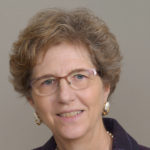
Wisconsin team to search for new antibiotics from untapped microbes
CONTACT: Toni Morrissey, (608) 263-3223, (608) 576-6456, tmorrissey@uwhealth.org
MADISON- Facing an imminent global public health crisis, a University of Wisconsin-Madison research team has been awarded up to $16 million from the National Institutes of Health to find new sources of antibiotics to combat the rising number of deadly antibiotic-resistant infections.
“The number of antibiotic-resistant strains has increased while the discovery of new antibiotics has slowed to a crawl. In fact, there are no new antibiotics,” said Dr. David Andes, professor of medicine and division chief of infectious diseases at the UW School of Medicine and Public Health. In the 1980s, pharmaceutical companies were seeking Food and Drug Administration (FDA) approval of 10 to 20 antibiotics a year. Andes said there has been more than an 80 percent decrease in development of antibiotics since that time.
“The inability to mine novel natural resources for antimicrobials is a major bottleneck for attacking the drug-resistance crisis,” he said.
“Our team has developed a completely new paradigm for anti-infective drug discovery,” said Andes. “We have developed novel ways of finding new antibiotics and testing them rapidly. It’s a fresh approach catalyzed by complementary input from basic and physician scientists, microbiologists, chemists and pharmacologists who are thinking about the same problem.”
Andes is a co-principal investigator for a National Institutes of Health (NIH) Center of Excellence for Translational Research (CETR). The other is Cameron Currie from the department of bacteriology in the UW College of Agriculture and Life Sciences. Other members of the team are Michael Hoffman, Dr. Bruce Klein, Dr. Rod Welch and Harvard researcher Jon Clardy. The project grant runs for five years.
Traditionally, soil has been mined for antimicrobials which are used to develop antibiotics. But the UW-Madison team has been studying other natural products from animals, insects, plants and marine life. Andes said the study of soil has become a dead end because the same microbes are turning up over and over again.
Andes said the scientists are looking in new places for symbiotic organisms, those that have an interdependent relationship, that are highly likely to have a biological effect.
The scientists are traveling around the globe to harvest insects, plants and marine life. Once specimens are collected, Currie sequences the genome of each product and then decides if it is promising enough to merit further testing. Tim Bugni, an assistant professor of pharmaceutical sciences, then uses a rapid and accurate method to determine if the microbes are making something never found before. A third part of the research attempts to coax an organism to make compounds by mimicking its environment.
“We’ve also seen that the compounds that microbes are making are evolutionarily selected to be safe because they protect the animal from the environment, from infection threats,” said Andes.
The team is looking at two groups of relevant microbes: fungi associated with infections in immunocompromised patients like cancer and transplant patients, and bacteria responsible for the majority of U.S. hospital infections. The U.S. Centers for Disease Control and Prevention says more than two million drug-resistant infections a year are reported.
“There are patients in almost every hospital with infections that have absolutely no treatment options,” said Andes.
The research builds on the work of the UW Antimicrobial Drug Discovery and Development Center established in 2007. The Wisconsin Partnership Program and various NIH Challenge grants funded the research.
“We’ve been finding large numbers of new compounds at a rate greater than what the pharmaceutical industry ever did,” said Andes.
The goal of the CETR is to find one drug lead in each of the next five years.
The project is funded by NIH grant number U19AI109673.





